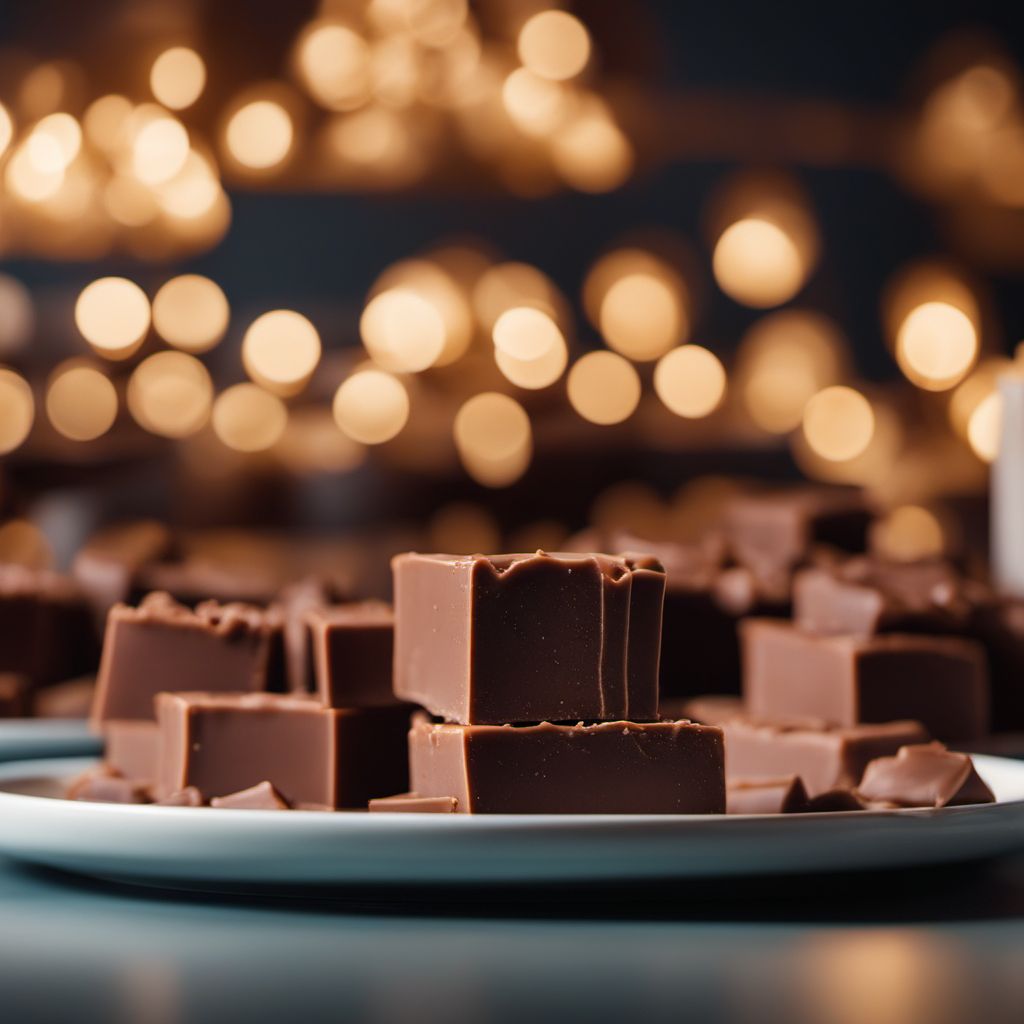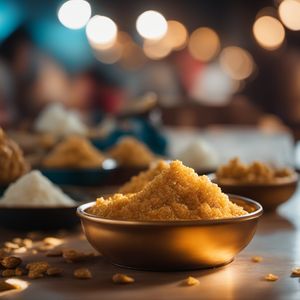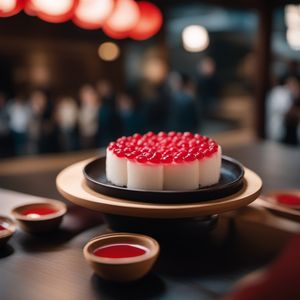
Dish
Fudge
Fudge is made by heating sugar, butter, and milk or cream in a pan until it reaches a soft ball stage. This mixture is then cooled and beaten until it becomes thick and creamy. Chocolate or other flavorings can be added to the mixture to create different varieties of fudge. Fudge is often cut into small squares and served as a dessert or snack.
Origins and history
Fudge is believed to have originated in the United States in the late 19th century. It became popular in the early 20th century, when it was often sold at fairs and carnivals. Fudge is now a popular dessert in many countries around the world.
Dietary considerations
Fudge is not suitable for individuals with lactose intolerance. It is also high in sugar and fat, making it a less healthy option for those trying to maintain a balanced diet. Some variations of fudge may contain nuts or other allergens.
Variations
There are many variations of fudge, including those made with different types of chocolate, such as white chocolate or dark chocolate. Some recipes also include additional ingredients, such as nuts or marshmallows.
Presentation and garnishing
Fudge is typically presented in small squares and is often garnished with a dusting of cocoa powder or chopped nuts. To prevent your fudge from becoming grainy, be sure to stir it constantly while it is cooking and avoid scraping the sides of the pan.
Tips & Tricks
Fudge can be stored in an airtight container at room temperature for up to two weeks. If it becomes too hard, it can be softened by microwaving it for a few seconds or by placing it in a warm oven for a few minutes.
Side-dishes
Fudge is typically served on its own as a dessert or snack. It can be paired with coffee or tea, or given as a gift during the holiday season.
Drink pairings
Fudge is often paired with coffee or tea.
Delicious Fudge recipes
More dishes from this category... Browse all »

Aamras
Indian cuisine

Aasmi
Indian cuisine

Agra petha
Indian cuisine

Aiyùbīng
Taiwanese cuisine

Ajdnek
Slovenian cuisine

Akafuku
Japanese cuisine

Akanés
Greek cuisine

Akumaki
Japanese cuisine
More cuisines from this region...

Fusion cuisine
Bold, Unexpected, Innovative, Creative

Midwestern American cuisine
Savory, Hearty, Comforting, Rich, Creamy

Northeastern American cuisines
Salty, Sweet, Savory, Tangy, Creamy

Southern American cuisine
Savory, Spicy, Sweet, Tangy, Smoky

Southwestern American cuisine
Spicy, Bold, Smoky, Earthy, Tangy

Western American cuisine
Hearty, Flavorful, Savory, Spicy, Smoky

